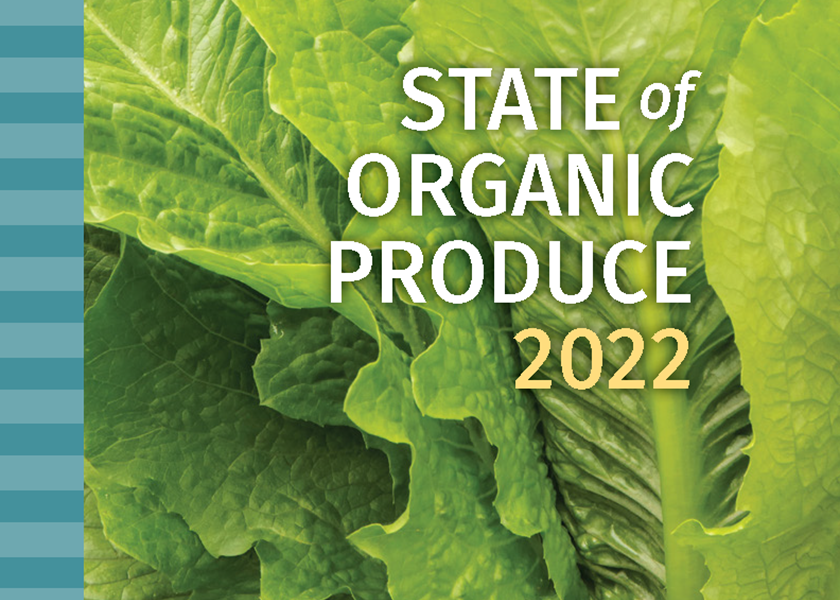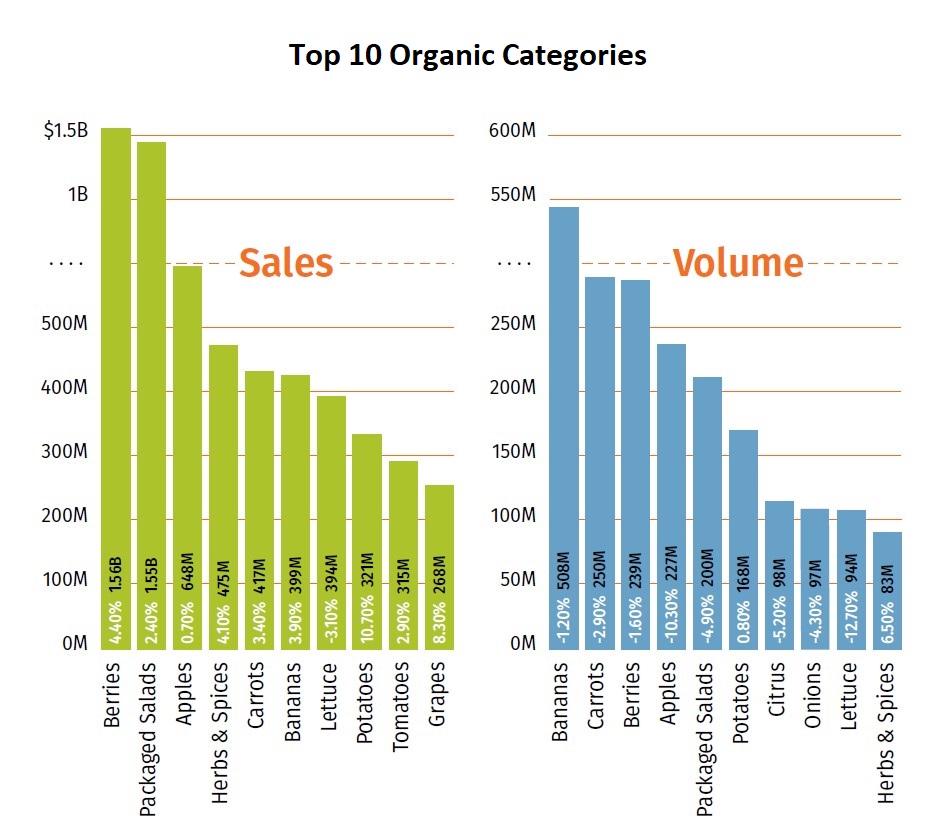OPN releases ‘State of Organic Produce 2022’ report

The performance of individual organic produce categories ranged widely last year, according to the "State of Organic Produce 2022," a new report released by Organic Produce Network.
The 72-page report provides an overall view of organic produce retail performance in 2022 as well as specific insights into the top 20 organic produce categories, according to a release.
While total organic produce sales increased by 3% and volume decreased by 3.7% year over year, the performance of the top 20 categories was variable as inflation and other pressures created a dynamic market environment, the release said.
The best performers in terms of year-over-year sales increases were onions (15.4%), cucumbers (11.3%) and potatoes (10.7%), while the worst performers were lettuce, down by 3.1%; celery, down 2.3%; and bell peppers, down 2.1%, according to the report.

On the volume side, the best-performing organic commodities year over year were grapes (6.9%), herbs and spices (6.5%), and cucumbers (2.7%), while the weakest were lettuce, down 12.7%; avocados, down 11.4%; and apples, down 10.3%.
The three lowest year-over-year volume performers all had significant contributing factors beyond inflation, the release said. Lettuce suffered aphid pressure in the desert due to warmer temperatures in the first and second quarters and was later dealt a “devastating blow” by INSV (impatiens necrotic spot virus) in California's Salinas Valley in the fall and early winter. Avocados had a lower-than-normal volume out of Mexico in the first half of the year, and apple supply was impacted by a very small Washington crop.
Two categories that bucked the organic produce sector’s overall trend of increased sales and decreased volume were fresh herbs and spices and grapes, the report finds. Both categories posted year-over-year increases in sales and volume, with organic herbs and spices showing gains of 4.1% and 6.5%, respectively, and organic grapes showing respective gains of 8.3% and 6.9%. In short, says OPN, last year’s highly inflationary environment didn’t keep these two categories down.
When it came to the top spot by total retail sales, berries took the lead in 2022, edging out packaged salads ever so slightly with $1.561 billion in sales. Packaged salad sales totaled $1.556 billion.
Bananas held onto the spot as the top volume mover with nearly 509 million pounds sold at retail in 2022.
One data set that gives an interesting look into organic produce performance are the price premiums commanded by various organic categories over their conventional counterparts, says OPN.
Of the categories analyzed, organic cucumbers took the lead in price premium percentage in 2022, selling for an average of 138% more per pound than conventional cucumbers. Celery, on the other hand, had one of the lowest premiums at 22%, dropping from 32% in 2021.
Organic bananas, which were grappling with increased costs last year, made gains in price premium over conventional bananas, jumping from 25% in 2021 to 32% in 2022.
"State of Organic Produce 2022" also explores the 20 leading categories by regional performance, which varied quite widely in certain circumstances. A notable example, says OPN, was organic celery, which lost significant year-over-year volume in every region except the West where it posted an enormous gain of 26.7%, suggesting perhaps that the organic celery juicing trend is far more popular there than in the other three regions.
Another incidence of disparate regional data involved organic fresh herbs and spices, which declined in volume in the Northeast by 9.4% yet posted a whopping 19.7% increase in the West.
In terms of year-over-year performance that was consistent across the U.S., organic onions were a prime example with double-digit sales gains in all four regions.
Packaged salads, an organic produce mainstay, also had similar results across all four regions, declining in volume by mid-single digits and increasing in sales by low single digits, closely reflecting the performance of the overall organic produce category, the release said.







